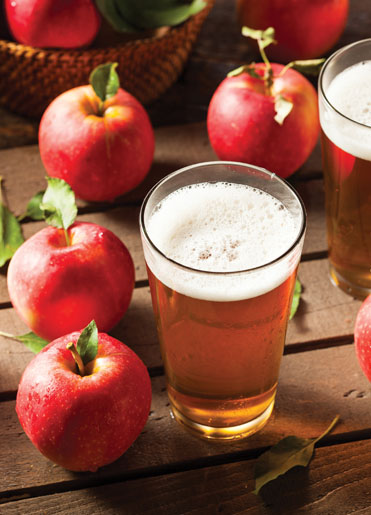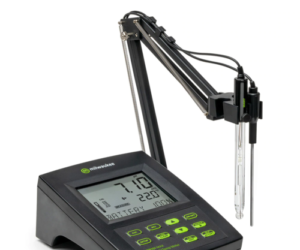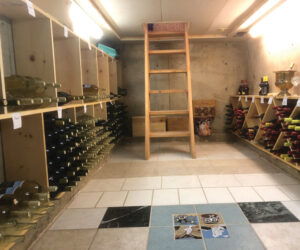
A nice crisp hard cider is something that can be enjoyed year-round and there is a multitude of ways to craft them. Winemakers can create a lower- alcohol hard cider that roughly mirrors beer in strength. Alternatively, larger additions of sugar can be added to the juice to create apple wine, which should land up near grape-wine strength. While there is a great variety of spiced and fruited hard ciders and wines to choose from, today I want to talk about crafting a basic hard apple cider or wine.
Gettin’ Juiced
While in some areas it may be called apple cider, what most cidermakers want to start with is the unfiltered, unpasteurized apple juice (UV-treated or pasteurized juice can be used but some argue that these treatments can be detrimental). You can buy this form of apple juice at roadside stands in apple growing regions during the fall season, or you can go to orchards to see if they sell fresh-pressed juice. For those more adventurous types, going all-in and pressing juice from raw apples will often be well-rewarded.
Pressing your own juice requires you to source your own apples. Also you’ll need two pieces of equipment as well as the time and effort. There are lots of apple varieties to choose from and while I will not go into them now, I do recommend that you source a wide array of apple types, including some bitter and sour varietals to round out the flavor profile. Getting a small team to help gather and process the juice is always a plus if you decide to go this route.
The first piece of equipment required to produce larger quantities of juice from whole apples is an apple grinder. A grinder (sometimes known as a scratter) will either crush or shred the apples to create an apple pulp. Often the grinder will be a larger-scale crusher like fresh grape winemakers might utilize. Another popular apple grinder is in-sink garbage disposal units. There are several designs for apple grinders/scratters you can find online.
The second piece of equipment is a press. If you already have one for pressing grapes . . . you can check this one off. But if not, a common homemade press utilizes a car jack in order to create the necessary pressure. Again, there are many designs to be found online.
Ferment Wisely
While you can just simply pitch yeast into the juice and let it ferment out, there are several additional ingredients you may want to utilize to create the best possible cider you can. To start with, if you are pressing your own or using untreated juice, you may consider an addition of metabisulfite (KMBS). Follow manufacturer’s direction for treatment.
If you do plan on making an apple wine, be sure to choose a yeast tolerant of higher alcohol levels, typically a wine yeast.
Cidermakers have been known to use wine, beer, and cider-specific yeast strains. Many cidermakers experiment with various yeast strains as some may leave the cider more sweet while others will ferment the juice to dryness. Some will bring fruity esters to the table, while others may provide a cleaner profile. If you do plan on making an apple wine, be sure to choose a yeast tolerant of higher alcohol levels, typically a wine yeast.
Since most apple juice will produce hard cider in the 5% alcohol by volume (ABV) range, many cidermakers will supplement the juice with a sugar
addition. There is a wide array of choices including corn sugar, table sugar, raw sugar, honey, and/or apple cider concentrate. If you are looking to simply boost the alcohol content and aid in drying the cider out, corn or table sugar are both good choices. Raw sugar will add a little molasses character to the cider while honey can add some floral notes depending on the type and level added. Frozen apple cider concentrate can be added to boost the apple aroma and character of the finished cider.
Post-Ferment Decisions
Backsweetening is fairly common to balance out the acidity caused by high levels of malic acid naturally found in apples. All the sugars that were mentioned in the previous paragraph can be used to backsweeten. Cidermakers will often add potassium sorbate and KMBS to prevent refermentation from occurring prior to backsweetening.
If you do want to carbonate your cider then you probably won’t be able to backsweeten your cider (an exception is if you have a kegging system, allowing you to force carbonate the cider.) This is because it is the yeast that will re-activate and ferment the “priming sugar” that the cidermaker adds during bottling in order to create the carbonation.
Finally there is the decision of whether to perform a malolactic fermentation (MLF) or not. This is up to the cidermaker as some off flavors can be created (especially if the producer plans to introduce sorbate) by MLF. Also some of that crisp snap from the malic acid will be lost. But if a more rounded flavor profile is what the cidermaker is after, then co-inoculating with a malolactic bacteria culture during primary fermentation should be considered. You can split the difference by using Lalvin 71B-1122 because it will convert more malic acid than other white wine yeast.







